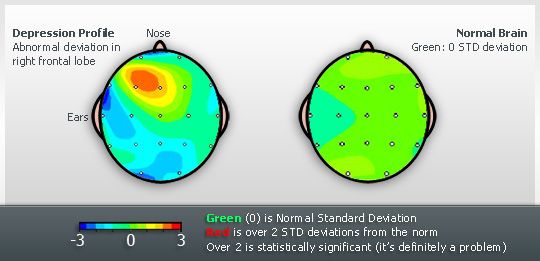Revealing the Connection Among qEEG and Slumber Disorder Patterns for Improved Diagnosis and Treatment
Revealing the Connection Among qEEG and Slumber Disorder Patterns for Improved Diagnosis and Treatment
Blog Article
Sleep apnea is a common sleep disorder that affects many individuals around the globe. It happens when a individual's breathing is disrupted during sleep, resulting to subpar sleep quality and multiple health issues. One of the ways researchers and physicians are endeavoring to better understand and diagnose sleep apnea is through a method called quantified electroencephalography, or qEEG. This approach assesses the electrical activity of the cerebrum and can offer valuable insights into how sleep apnea impacts cerebral function and general health.
qEEG involves placing small electrodes on the head to capture brain waves. These brain oscillations are then examined to identify patterns that may indicate sleep conditions, including sleep apnea. By analyzing these patterns, healthcare professionals can obtain a more precise picture of how sleep apnea disrupts typical cerebral function during slumber. This data can be essential for formulating efficient treatment plans tailored to specific clients. Understanding the connection between qEEG and sleep apnea can lead to improved identification techniques and better outcomes for those impacted by this disorder.
Research has shown that individuals with sleep apnea often display specific alterations in their cerebral oscillation patterns. For example, during episodes of apnea, the brain may exhibit heightened activity in certain areas while other areas become less active. These changes can influence how well a person sleeps and how rested they feel upon awakening. By employing qEEG to track these cerebral oscillation patterns, physicians can recognize particular traits of sleep apnea in clients, which can assist in making a more accurate diagnosis. This is especially important because sleep apnea can sometimes be confused for other sleep conditions, resulting to misguided therapies.
In addition to improving identification, qEEG can also serve a part in evaluating the efficacy of therapies for sleep blog apnea. For example, after a client starts employing a continuous beneficial airway force (CPAP) device, which assists maintain the passage clear during slumber, qEEG can be used to evaluate changes in brain activity. If the brain shows enhanced trends of slumber after initiating treatment, it may suggest that the treatment is functioning well. This response can assist doctors make necessary adjustments to treatment plans, ensuring that patients obtain the optimal treatment feasible.
In summary, the connection between qEEG and sleep apnea patterns is an promising area of study that offers potential for enhancing diagnosis and treatment. By understanding how sleep apnea affects brain activity, medical professionals can formulate more efficient approaches to assist clients attain improved sleep and improve their overall health. As research continues to evolve, it is probable that qEEG will turn into an essential tool in the fight against sleep apnea, leading to better outcomes for those who experience from this challenging condition.